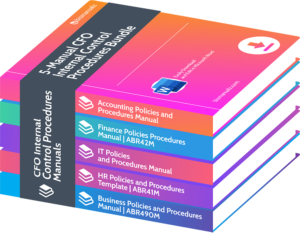What Should a CFO Know About Credit Risk Assessment?

As a CFO, your role is crucial in managing the financial health of your company. In order to make informed decisions and mitigate potential risks, it is essential for CFOs to have a comprehensive understanding of credit risk assessment. In today’s fast-paced market, keeping up with credit risks is imperative for business success. Without proper risk assessment, your company’s financial stability could be in jeopardy. What should a CFO know about credit risk assessment?
What is Credit Risk Assessment?
Credit risk assessment is the procedure of assessing the creditworthiness of individuals or companies to determine the probability of defaulting on their debt obligations. This involves examining factors such as credit history, financial statements, and market conditions to evaluate the potential risks involved in lending money or extending credit to a borrower.
By conducting a comprehensive credit risk assessment, CFOs can make well-informed decisions about whether to approve or reject credit applications, establish appropriate credit limits, and implement strategies to mitigate risks. It is a crucial tool that helps CFOs minimize potential losses and maintain the financial stability of their organizations.
Why is Credit Risk Assessment Important for CFOs?
Credit risk assessment is of utmost importance for CFOs as it allows them to make well-informed decisions regarding lending and investments. By evaluating the creditworthiness of borrowers or counterparties, CFOs can effectively reduce the risk of financial losses and ensure the financial stability of their organizations.
This assessment provides valuable insights into the likelihood of default, potential cash flow issues, and overall financial health of entities. Armed with this information, CFOs can establish appropriate credit limits, negotiate favorable terms, and implement risk management strategies. Ultimately, credit risk assessment empowers CFOs to protect their company’s financial position and make sound financial decisions.
How Does Credit Risk Assessment Affect Financial Decisions?
Credit risk assessment plays a crucial role in shaping financial decisions for CFOs. Here are the steps involved in how credit risk assessment affects financial decisions:
- Evaluating creditworthiness: Assessing credit risk helps CFOs determine the creditworthiness of potential borrowers, allowing them to make informed decisions about granting credit.
- Budgeting and forecasting: Credit risk assessment enables CFOs to analyze the potential impact of credit risks on the company’s budget and financial forecasts.
- Setting credit terms: By assessing credit risk, CFOs can establish appropriate credit terms, such as interest rates and repayment schedules, to mitigate the risk of default.
- Allocating resources: Credit risk assessment helps CFOs effectively allocate resources, ensuring that sufficient funds are available to finance credit operations.
- Managing cash flow: By identifying potential credit risks, CFOs can better manage cash flow, ensuring that there are enough funds to cover operational expenses and financial obligations.
By considering these steps, CFOs can utilize credit risk assessment to make sound financial decisions and safeguard the financial health of their company.
What are the Key Elements of Credit Risk Assessment?
Credit risk assessment is a crucial aspect of financial management for any business, and it is essential for CFOs to have a comprehensive understanding of its key elements. In this section, we will discuss the four main components of credit risk assessment: credit score, credit history, debt-to-income ratio, and payment history.
By examining each of these elements, CFOs can gain a better understanding of the potential risks involved in extending credit to individuals or businesses. So, let’s dive into the key elements of credit risk assessment and how they play a crucial role in financial decision-making.
1. Credit Score
To determine creditworthiness, an important step is assessing an individual’s credit score. Here is a step-by-step process to understand credit scores:
- Obtain a credit report from credit bureaus such as Experian or Equifax.
- Review the report for any discrepancies or errors.
- Examine the factors that contribute to the credit score, such as payment history and credit utilization.
- Compare the credit score with the lender’s requirements for loan approval.
- Identify areas for improvement, such as making timely payments and reducing credit card balances.
Fact: A higher credit score indicates a lower risk of default, allowing borrowers to access better loan terms and interest rates.
2. Credit History
A credit history is a crucial aspect of assessing credit risk. It offers valuable information about an individual or company’s past borrowing and repayment behavior. When evaluating credit history, it is important to follow these steps:
- Review credit reports from major credit bureaus, including Equifax, Experian, and TransUnion.
- Look for any instances of late payments, defaults, or bankruptcies in the credit history.
- Assess the length of the credit history to determine stability and reliability.
- Examine the types of credit accounts, such as credit cards, loans, or mortgages.
- Consider the credit utilization ratio, which measures the amount of available credit being used.
- Take note of any recent credit inquiries, as multiple inquiries may indicate a higher credit risk.
- Look for patterns or trends in the credit history, such as consistent on-time payments or recurring delinquencies.
By carefully examining credit history, CFOs can gain valuable insights to make informed credit decisions and effectively manage credit risk.
3. Debt-to-Income Ratio
The debt-to-income ratio is a crucial factor in assessing credit risk for CFOs, as it reflects the ability of an individual or company to manage debt payments.
- Calculate the total monthly debt payments.
- Determine the gross monthly income.
- Divide the total monthly debt payments by the gross monthly income.
- Multiply the result by 100 to obtain the debt-to-income ratio as a percentage.
A lower debt-to-income ratio indicates a stronger financial position, as it shows that a smaller portion of income is allocated towards debt payments.
4. Payment History
A person or company’s payment history is a crucial element in assessing credit risk. It provides valuable insights into past behavior regarding debt repayment and financial responsibilities. When evaluating payment history, creditors take into account factors such as late payments, defaults, and bankruptcy filings.
To accurately assess payment history, the following steps can be followed:
- Review credit reports and statements to gather information on previous loans and credit accounts.
- Check for any missed or late payments, noting the frequency and severity of each.
- Look for any charge-offs or accounts that have been sent to collections.
- Analyze the length of time since the last negative payment entry.
- Consider any patterns in payment behavior, such as consistently making payments on time or regularly missing due dates.
- Weigh the impact of any settled or paid-off accounts.
- Consider the overall credit utilization ratio and how it relates to payment history.
This comprehensive assessment of payment history is crucial in helping creditors determine creditworthiness and potential risks associated with lending.
What are the Different Methods of Credit Risk Assessment?
As a CFO, understanding credit risk assessment is crucial in managing your company’s financial health. One of the key components of credit risk assessment is the method used to evaluate and analyze potential risks.
In this section, we will discuss the two main methods of credit risk assessment: qualitative and quantitative. By understanding the differences between these methods, you can make informed decisions about managing credit risk in your organization.
1. Qualitative Assessment
Conducting a qualitative assessment is a crucial step in the credit risk assessment process for CFOs. This involves evaluating non-numerical information to determine the creditworthiness of potential borrowers.
- Obtain and review relevant documents, such as credit applications, financial statements, and industry reports, to gather necessary information.
- Analyze the borrower’s reputation, taking into consideration past relationships and feedback from other creditors.
- Evaluate the borrower’s business model and industry outlook to determine their ability to generate sufficient cash flows.
- Assess the borrower’s management team and their experience in managing credit and financial risks.
- Consider external factors, such as economic conditions, regulatory changes, and geopolitical risks, that may impact the borrower’s ability to repay.
2. Quantitative Assessment
Quantitative assessment is a crucial aspect of credit risk evaluation for CFOs. It involves utilizing numerical data and statistical models to determine the creditworthiness of borrowers. This method allows CFOs to analyze factors such as debt-to-income ratio, credit score, and payment history in order to make well-informed decisions.
By examining financial statements and credit scoring models, CFOs can accurately assess the level of risk involved in lending money. Through the use of quantitative assessment, CFOs can mitigate risks, enhance financial performance, and make sound decisions for the company’s financial stability.
Monitoring credit risk, diversifying credit sources, and implementing effective credit policies are some ways in which CFOs can utilize quantitative assessment to safeguard the company’s financial well-being.
What are the Tools and Techniques Used for Credit Risk Assessment?
In the world of finance, credit risk assessment is a critical process for any CFO to understand. This section will delve into the tools and techniques used for credit risk assessment, which include credit scoring models, financial statement analysis, and credit rating agencies.
By examining these methods, CFOs can gain a deeper understanding of how to effectively assess and manage credit risk in their organization. So, let’s dive into the details and explore the different approaches to credit risk assessment.
1. Credit Scoring Models
Credit scoring models are an essential tool for CFOs in assessing credit risk. These models assist in determining the creditworthiness of borrowers and predicting the likelihood of default. Here are the steps involved in credit scoring models:
- Data collection: Gather relevant information about the borrower, including their financial history, credit utilization, and payment patterns.
- Variable selection: Identify the critical variables that significantly impact credit risk, such as credit utilization ratio and payment history.
- Model development: Construct a statistical model using past data to forecast the probability of default based on the selected variables.
- Model validation: Test the accuracy and reliability of the credit scoring model using independent data sets.
- Score assignment: Assign a credit score to each borrower based on their creditworthiness, ranging from low to high risk.
Pro-tip: It is crucial to regularly update and refine credit scoring models to ensure their effectiveness in assessing credit risk in a constantly changing financial landscape.
2. Financial Statement Analysis
Financial statement analysis is a crucial component of credit risk assessment for CFOs. It involves a detailed examination of a company’s financial statements to evaluate its financial health and creditworthiness.
Here are the steps involved in financial statement analysis:
- Review the balance sheet to assess the company’s assets, liabilities, and equity.
- Analyze the income statement to understand the company’s revenue, expenses, and profitability.
- Examine the cash flow statement to gauge the company’s ability to generate cash and manage its finances.
- Calculate financial ratios, such as liquidity ratios, profitability ratios, and solvency ratios, to assess the company’s financial performance.
- Compare the company’s financial performance to industry benchmarks and historical data to identify trends and potential risks.
To improve financial health, CFOs should:
- Regularly analyze financial statements to detect any inconsistencies or areas of concern.
- Implement measures to improve financial ratios and address any weaknesses.
- Utilize financial statement analysis to make informed decisions about credit risk management and allocation of resources.
3. Credit Rating Agencies
Credit rating agencies play a vital role in assessing credit risk for CFOs. These agencies evaluate companies’ creditworthiness and assign credit ratings based on their financial strength and ability to meet debt obligations.
By analyzing financial statements, industry trends, and market conditions, credit rating agencies provide valuable insights to CFOs, aiding in their decision-making process regarding lending and investment.
The ratings given by these agencies serve as a significant benchmark for investors and creditors, impacting interest rates and terms. CFOs can utilize the assessments of credit rating agencies to evaluate the creditworthiness of potential partners and develop strategies to mitigate credit risks.
What are the Benefits of Credit Risk Assessment for CFOs?
As a Chief Financial Officer (CFO), it is crucial to have a thorough understanding of credit risk assessment. This process involves analyzing the potential risks associated with granting credit to customers or other businesses.
But what are the specific benefits of credit risk assessment for CFOs? In this section, we will discuss the three key advantages that CFOs can gain from implementing credit risk assessment: better decision making, improved financial performance, and mitigation of risks. By the end, you will have a clear understanding of why credit risk assessment is essential for any CFO.
1. Better Decision Making
Better decision making is a key benefit of implementing credit risk assessment for CFOs. To improve their decision making process, CFOs can follow these steps:
- Analyze the creditworthiness of potential borrowers.
- Assess the level of risk associated with extending credit.
- Evaluate the financial stability of customers, considering factors like credit history and debt-to-income ratio.
- Utilize credit scoring models and financial statement analysis to make informed decisions.
- Take into account credit rating agencies’ assessments of potential borrowers.
By implementing these steps, CFOs can make better decisions regarding credit extensions, reducing the risk of bad debt and financial loss. It is also recommended that CFOs regularly review and update credit policies and diversify credit sources to further enhance their decision-making capabilities.
2. Improved Financial Performance
Improved financial performance is a key benefit of credit risk assessment for CFOs. By effectively managing credit risk, CFOs can enhance their company’s financial health. Here are some steps they can take to achieve improved financial performance:
- Implementing effective credit policies to ensure timely payments and reduce bad debts.
- Monitoring and managing credit risk through regular assessments, credit reviews, and credit limits.
- Diversifying credit sources to reduce reliance on a single customer or supplier.
By following these steps, CFOs can optimize their company’s financial performance and minimize the negative impact of credit risk.
3. Mitigation of Risks
Mitigating risks is crucial for CFOs when conducting credit risk assessments. To effectively mitigate risks in credit risk assessment, follow these steps:
- Perform thorough due diligence on potential borrowers.
- Establish clear credit policies and guidelines.
- Implement credit limits and regularly monitor credit utilization.
- Regularly review and update credit risk assessment processes.
- Diversify credit sources to minimize exposure to individual borrowers.
- Monitor market conditions and adjust risk strategies accordingly.
- Utilize credit risk management tools such as credit scoring models and financial statement analysis.
- Maintain open communication and relationships with borrowers.
- Create contingency plans and risk mitigation strategies.
How Can CFOs Use Credit Risk Assessment to Improve Their Company’s Financial Health?
As a key leader in a company, a Chief Financial Officer (CFO) must have a thorough understanding of credit risk assessment and its impact on the financial health of their organization. In this section, we will discuss how CFOs can utilize credit risk assessment to improve their company’s financial well-being.
We will cover the implementation of effective credit policies, the importance of monitoring and managing credit risk, and the benefits of diversifying credit sources. By utilizing these strategies, CFOs can make informed decisions that can lead to a stronger and more resilient financial future for their company.
1. Implementing Credit Policies
Managing credit risk effectively requires the implementation of credit policies. Here are important steps to consider:
- Evaluate current credit policies: Assess existing policies and identify any gaps or areas for improvement.
- Establish clear credit guidelines: Define criteria for extending credit, such as credit scores, credit history, and payment terms.
- Determine credit limits: Set the maximum amount of credit a customer can receive based on their financial standing.
- Create a standardized credit application process: Develop a form to gather relevant customer information.
- Conduct thorough credit checks: Perform evaluations using credit scoring models, financial statement analysis, and credit rating agencies.
- Monitor payment behavior: Regularly review customer payment history to identify potential risks and take necessary actions.
To improve your company’s financial health, consider:
- Regularly reviewing and updating credit policies
- Implementing automated credit management systems
- Offering training to employees involved in the credit approval process
2. Monitoring and Managing Credit Risk
Monitoring and managing credit risk is a crucial responsibility for CFOs in order to maintain the financial stability of their company. To effectively handle credit risk, here are some steps that can be taken:
- Regularly review customer credit profiles and credit limits to stay informed.
- Monitor payment behavior and be on the lookout for any indications of deteriorating creditworthiness.
- Establish clear credit policies and procedures, including a thorough credit application process and defined credit terms.
- Implement a robust credit monitoring system to track customer payment patterns and identify potential risks.
- Maintain open communication with customers to promptly address any payment issues that may arise.
- Diversify credit sources to reduce reliance on a single customer or industry.
- Regularly update credit risk management strategies to adapt to changing market conditions.
By diligently monitoring and managing credit risk, CFOs can safeguard their company’s financial health and make informed decisions to mitigate potential risks.
3. Diversifying Credit Sources
Diversifying credit sources is a crucial step for CFOs as it helps mitigate risks and ensures a stable financial position for the company. Follow these steps to effectively diversify credit sources:
- Identify potential alternative credit sources, such as banks, financial institutions, or peer-to-peer lending platforms.
- Conduct thorough research and due diligence on each potential source, considering their reputation, interest rates, and terms.
- Establish relationships with multiple credit providers to have a wider range of options when seeking financing.
- Regularly review and assess the performance of existing credit sources to identify any potential weaknesses or risks.
- Continuously monitor the market for new credit sources and consider expanding the company’s network of lenders.
- Develop a strategy to allocate credit across different sources based on their terms, interest rates, and risk levels.
- Ensure that the company’s credit policies and procedures align with the objective of diversifying credit sources.
- Regularly communicate and negotiate with credit providers to maintain good relationships and potentially secure better terms.
Frequently Asked Questions

What is credit risk assessment and why is it important for a CFO to know about it?
Credit risk assessment refers to the process of evaluating the potential risk of loss that may arise from a borrower’s failure to repay a loan or meet their financial obligations. It is important for a CFO to understand credit risk assessment as they are responsible for managing the financial health of a company and need to be aware of potential risks that may affect the company’s cash flow and profitability.
What are the key components of credit risk assessment that a CFO should be familiar with?
A CFO should be familiar with the following key components of credit risk assessment:
- Credit History: This involves analyzing the borrower’s past credit behavior and repayment patterns.
- Financial Ratios: CFOs should be familiar with various financial ratios such as debt-to-equity ratio, current ratio, and cash flow coverage ratio to assess a borrower’s financial health.
- Industry and Market Trends: Understanding the industry and market trends can help CFOs assess the potential risks associated with a borrower’s business.
- Credit Rating: Credit rating agencies assign ratings to borrowers based on their creditworthiness. CFOs must be aware of these ratings to assess the risk of lending to a particular borrower.
How does credit risk assessment impact a company’s financial decision-making process?
Credit risk assessment plays a crucial role in a company’s financial decision-making process. It helps CFOs determine the creditworthiness of potential borrowers and make informed decisions regarding lending or investing in a particular company. It also helps in setting appropriate interest rates and loan terms to mitigate any potential risks.
What are some common methods used for credit risk assessment?
Some common methods used for credit risk assessment include:
- Credit Scoring: This involves assigning a numerical score to a borrower based on their credit history, financial ratios, and other factors.
- Financial Statement Analysis: CFOs can analyze a borrower’s financial statements to assess their creditworthiness and financial health.
- Qualitative Analysis: This involves evaluating factors such as industry and market trends, management strength, and borrower’s reputation to determine credit risk.
How can a CFO mitigate credit risk for their company?
There are several ways a CFO can mitigate credit risk for their company, including:
- Diversifying the loan portfolio by lending to different industries and types of borrowers.
- Setting appropriate credit limits for borrowers based on their creditworthiness and the company’s risk appetite.
- Implementing credit risk management policies and procedures to identify, assess, and monitor credit risk.
- Regularly reviewing and updating credit risk assessment methods to ensure they are effective and aligned with the company’s goals and objectives.
Is hiring a credit risk assessment specialist necessary for a company with a CFO?
While hiring a credit risk assessment specialist is not always necessary for a company with a CFO, it can be beneficial for larger companies with a diverse and complex loan portfolio. A specialist can provide in-depth analysis and insights that can help CFOs make more informed and strategic decisions regarding credit risk management. However, a CFO can also develop their expertise in credit risk assessment by staying updated on industry trends and continuously improving their knowledge and skills in this area.
















Leave a Reply